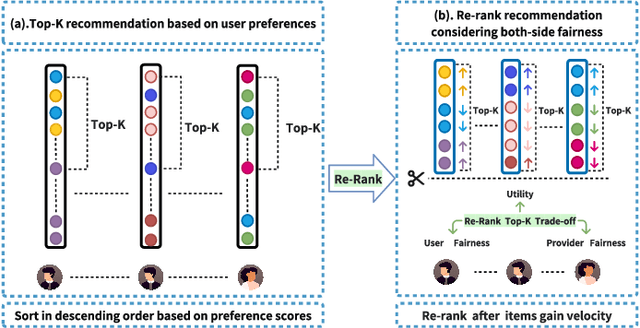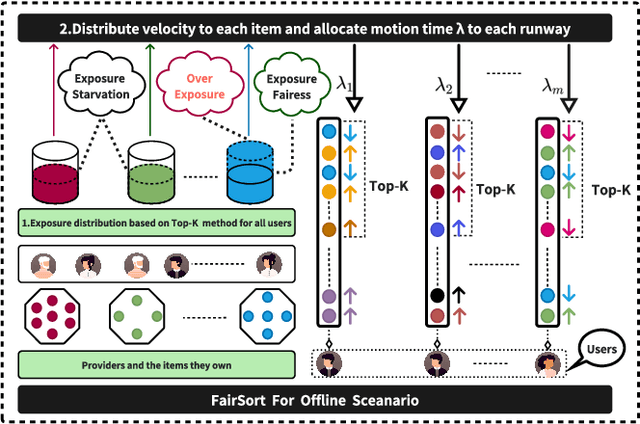Guodong Fan
Can LLMs Replace Human Evaluators? An Empirical Study of LLM-as-a-Judge in Software Engineering
Feb 10, 2025Abstract:Recently, large language models (LLMs) have been deployed to tackle various software engineering (SE) tasks like code generation, significantly advancing the automation of SE tasks. However, assessing the quality of these LLM-generated code and text remains challenging. The commonly used Pass@k metric necessitates extensive unit tests and configured environments, demands a high labor cost, and is not suitable for evaluating LLM-generated text. Conventional metrics like BLEU, which measure only lexical rather than semantic similarity, have also come under scrutiny. In response, a new trend has emerged to employ LLMs for automated evaluation, known as LLM-as-a-judge. These LLM-as-a-judge methods are claimed to better mimic human assessment than conventional metrics without relying on high-quality reference answers. Nevertheless, their exact human alignment in SE tasks remains unexplored. In this paper, we empirically explore LLM-as-a-judge methods for evaluating SE tasks, focusing on their alignment with human judgments. We select seven LLM-as-a-judge methods that utilize general-purpose LLMs, alongside two LLMs specifically fine-tuned for evaluation. After generating and manually scoring LLM responses on three recent SE datasets of code translation, code generation, and code summarization, we then prompt these methods to evaluate each response. Finally, we compare the scores generated by these methods with human evaluation. The results indicate that output-based methods reach the highest Pearson correlation of 81.32 and 68.51 with human scores in code translation and generation, achieving near-human evaluation, noticeably outperforming ChrF++, one of the best conventional metrics, at 34.23 and 64.92. Such output-based methods prompt LLMs to output judgments directly, and exhibit more balanced score distributions that resemble human score patterns. Finally, we provide...
FairSort: Learning to Fair Rank for Personalized Recommendations in Two-Sided Platforms
Nov 30, 2024



Abstract:Traditional recommendation systems focus on maximizing user satisfaction by suggesting their favorite items. This user-centric approach may lead to unfair exposure distribution among the providers. On the contrary, a provider-centric design might become unfair to the users. Therefore, this paper proposes a re-ranking model FairSort\footnote{\textbf{Reproducibility:}The code and datasets are available at \url{https://github.com/13543024276/FairSort}} to find a trade-off solution among user-side fairness, provider-side fairness, and personalized recommendations utility. Previous works habitually treat this issue as a knapsack problem, incorporating both-side fairness as constraints. In this paper, we adopt a novel perspective, treating each recommendation list as a runway rather than a knapsack. In this perspective, each item on the runway gains a velocity and runs within a specific time, achieving re-ranking for both-side fairness. Meanwhile, we ensure the Minimum Utility Guarantee for personalized recommendations by designing a Binary Search approach. This can provide more reliable recommendations compared to the conventional greedy strategy based on the knapsack problem. We further broaden the applicability of FairSort, designing two versions for online and offline recommendation scenarios. Theoretical analysis and extensive experiments on real-world datasets indicate that FairSort can ensure more reliable personalized recommendations while considering fairness for both the provider and user.
FDCE-Net: Underwater Image Enhancement with Embedding Frequency and Dual Color Encoder
Apr 27, 2024



Abstract:Underwater images often suffer from various issues such as low brightness, color shift, blurred details, and noise due to light absorption and scattering caused by water and suspended particles. Previous underwater image enhancement (UIE) methods have primarily focused on spatial domain enhancement, neglecting the frequency domain information inherent in the images. However, the degradation factors of underwater images are closely intertwined in the spatial domain. Although certain methods focus on enhancing images in the frequency domain, they overlook the inherent relationship between the image degradation factors and the information present in the frequency domain. As a result, these methods frequently enhance certain attributes of the improved image while inadequately addressing or even exacerbating other attributes. Moreover, many existing methods heavily rely on prior knowledge to address color shift problems in underwater images, limiting their flexibility and robustness. In order to overcome these limitations, we propose the Embedding Frequency and Dual Color Encoder Network (FDCE-Net) in our paper. The FDCE-Net consists of two main structures: (1) Frequency Spatial Network (FS-Net) aims to achieve initial enhancement by utilizing our designed Frequency Spatial Residual Block (FSRB) to decouple image degradation factors in the frequency domain and enhance different attributes separately. (2) To tackle the color shift issue, we introduce the Dual-Color Encoder (DCE). The DCE establishes correlations between color and semantic representations through cross-attention and leverages multi-scale image features to guide the optimization of adaptive color query. The final enhanced images are generated by combining the outputs of FS-Net and DCE through a fusion network. These images exhibit rich details, clear textures, low noise and natural colors.
Spatial-frequency Dual-Domain Feature Fusion Network for Low-Light Remote Sensing Image Enhancement
Apr 26, 2024



Abstract:Low-light remote sensing images generally feature high resolution and high spatial complexity, with continuously distributed surface features in space. This continuity in scenes leads to extensive long-range correlations in spatial domains within remote sensing images. Convolutional Neural Networks, which rely on local correlations for long-distance modeling, struggle to establish long-range correlations in such images. On the other hand, transformer-based methods that focus on global information face high computational complexities when processing high-resolution remote sensing images. From another perspective, Fourier transform can compute global information without introducing a large number of parameters, enabling the network to more efficiently capture the overall image structure and establish long-range correlations. Therefore, we propose a Dual-Domain Feature Fusion Network (DFFN) for low-light remote sensing image enhancement. Specifically, this challenging task of low-light enhancement is divided into two more manageable sub-tasks: the first phase learns amplitude information to restore image brightness, and the second phase learns phase information to refine details. To facilitate information exchange between the two phases, we designed an information fusion affine block that combines data from different phases and scales. Additionally, we have constructed two dark light remote sensing datasets to address the current lack of datasets in dark light remote sensing image enhancement. Extensive evaluations show that our method outperforms existing state-of-the-art methods. The code is available at https://github.com/iijjlk/DFFN.
 Add to Chrome
Add to Chrome Add to Firefox
Add to Firefox Add to Edge
Add to Edge